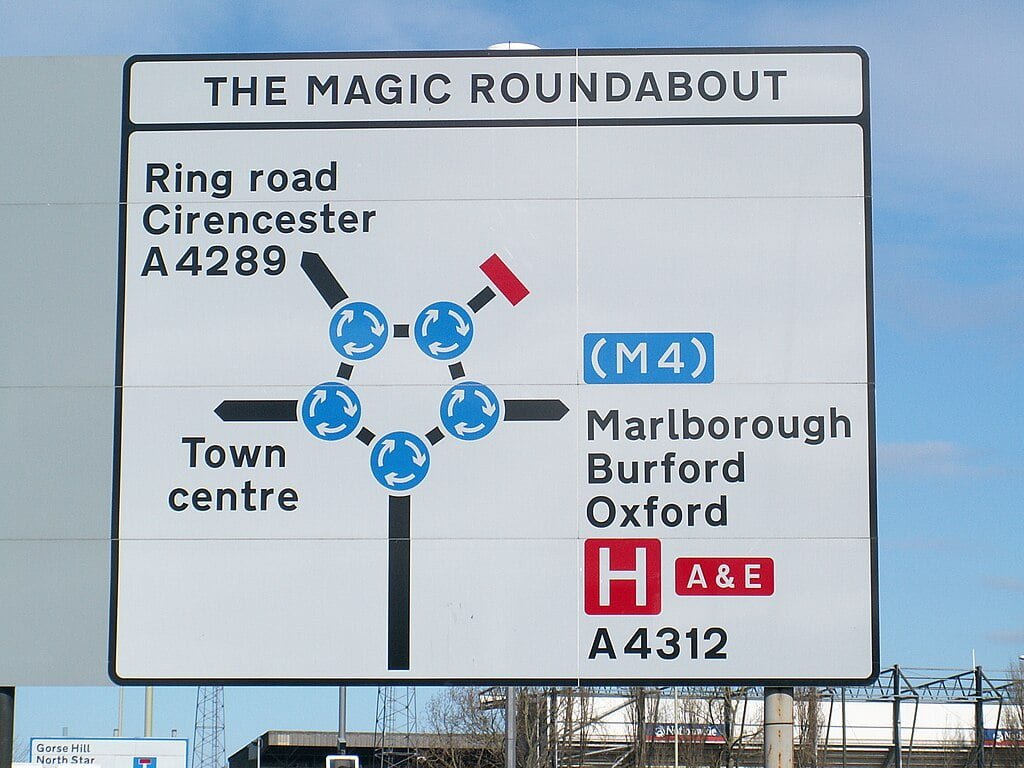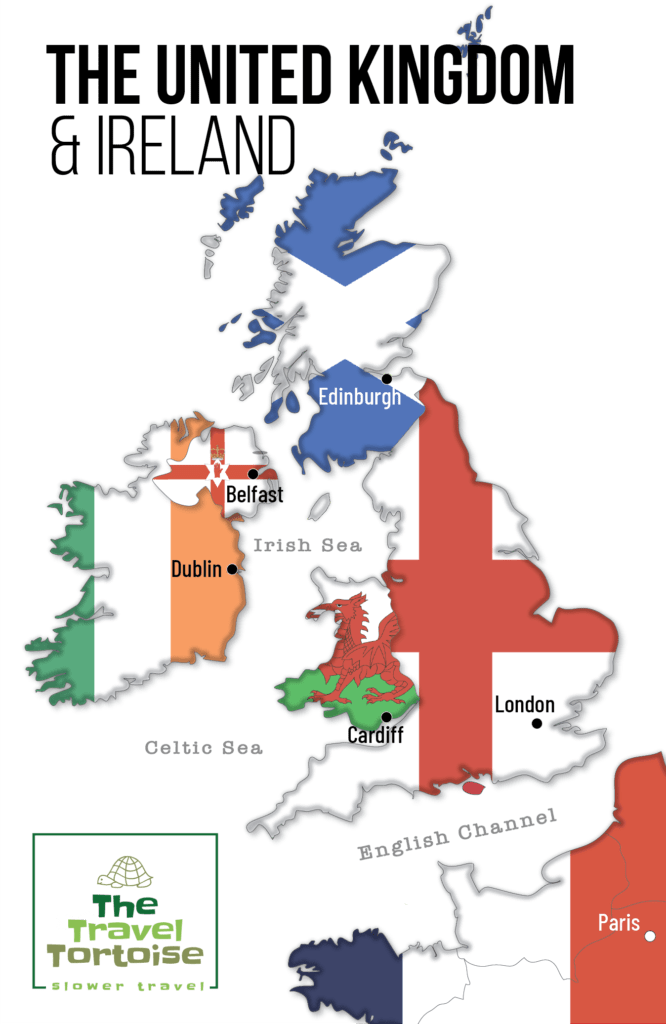If you want to explore some of the most beautiful yet remote parts of England, Scotland, Wales, or Northern Ireland, then hiring a car is the only way to go. This is because our public transport system is really quite crap, especially the further off-the-beaten-track you go.
Of course, with any new country you visit the driving norms and rules will differ from what you’re probably used to, but certainly don’t let this fact put you off hiring a car. I get it – the thought of all those roundabouts and driving a right-hand drive car on the left side of the road may seem daunting to the uninitiated but it’s really not that hard!
I’ve been driving in England for the last 30 years (also professionally as a delivery driver) and I have loads of experience driving in Europe too. I’ll tell you everything you need to know about hiring a car and driving in the UK, from driving tips, rules of the road, parking advice, car rental requirements, how to find the best car hire deals in the UK, and some very cool UK road trip ideas to consider during your visit.
So, make sure your windscreen wipers are working, and put your seat belt on, because we’re going on a British road trip…
HOW TO RENT A CAR IN THE UK?
There are many reputable car rental companies in the UK scattered at major airports, train stations, city centers, and other key locations across the country. The process of renting a car in the UK is straightforward, regardless of which rental car company you choose, but for the best value car hire in the UK, check out Discover Cars. They compare prices from top rental companies to help you save both time and money. I personally use them whenever I rent a car abroad, as they operate worldwide and consistently offer competitive rates.
Pick-up: Most rental companies have offices at major airports, train stations, and city centers. When picking up your car, make sure you have your booking confirmation, driving license, International Driving Permit (IDP) (if required), and credit card on hand to speed up the process.
Car inspection: Carefully inspect the car for any pre-existing damage before you drive away. Take photos and report any issues to the rental company to avoid being held responsible for them. Without this documentation, you might end up being charged for damage that wasn’t your fault.
Rental agreement: Read the rental agreement carefully to fully understand the insurance coverage, mileage limits, fuel policy, and any additional fees. This ensures there are no surprises when you return the car.
Returning the car: Return the car on time to avoid late fees, and always leave it with as much fuel as it had when you picked it up; otherwise, you’ll get stung with hefty fuel fees. Someone from the rental company will likely inspect the car with you to check for damage before giving you your receipt.

Insurance options when renting a car
Basic insurance is typically included in most UK car rentals, but it often comes with a high excess (deductible). If you decide to upgrade your coverage, you’ll typically be offered the following options:
- Collision Damage Waiver (CDW): Reduces the excess but may not cover all types of damage.
- Super CDW/Zero Excess: Eliminates the excess, offering the most comprehensive coverage for peace of mind.
Additional fees: Most rental car companies charge a young driver surcharge for drivers under 25, and may also charge an additional driver fee for adding extra drivers. If your car doesn’t come with built-in GPS, you may be offered one for an additional fee. Additionally, if you’re traveling with children under 12 (or 135cm in height), you’ll be required to pay for a child seat, as mandated by UK law.
CAR RENTAL REQUIREMENTS IN UK
Driving license: To rent a car in the UK, you must have a valid driving license. If your license is not in English, you’ll need an International Driving Permit (IDP), which serves as a translation of your national license into English. You can quickly obtain an IDP online through services like the International Drivers Association. Always carry a valid form of ID when driving in the UK to ensure you’re complying with local regulations.
Minimum age: The minimum age to drive in the UK is 17 for cars and motorcycles, 18 for medium-sized vehicles, and 21 for large vehicles. However, most UK car hire companies require drivers to be at least 21 years old to rent a car. Some companies may charge an extra young driver surcharge for drivers under 25, so be prepared for that additional cost.
Rental car age: In the UK, most rental car companies require drivers to be at least 21 years old, but some have higher minimum age requirements or apply a surcharge for drivers under 25. Be sure to check the rental terms for age-related restrictions before booking your UK car hire.

DRIVING IN THE UK: THE RULES OF THE ROAD
Driving side
In the UK, we drive on the left-hand side of the road, which may feel unusual if you’re used to driving on the right. The driver’s seat is located on the right side of the vehicle, and you’ll be changing gears with your left hand (if it’s a manual transmission vehicle). But don’t worry, you’ll get used to it quickly, and before you know it, driving in the UK will feel second nature.
Seat belts and mobile phones
Seat belts are mandatory for all passengers, so make sure everyone in your rental car is properly strapped in. Using a handheld mobile phone while driving is illegal in the UK, and heavy fines are enforced if caught.
Alcohol limit
The legal alcohol limit is 80 milligrams of alcohol per 100 milliliters of blood in England, Wales, and Northern Ireland, and 50 milligrams in Scotland. It’s nearly impossible to safely calculate how much this translates to in terms of drinks because factors like body weight, food intake, and personal tolerance come into play. To be safe, avoid alcohol altogether if you plan to drive in the UK.
Speed limits
Speed limits can vary, so it’s important to pay attention to road signs. Generally:
- Motorways: 70 mph (112 km/h)
- Single carriageways: 60 mph (96 km/h)
- Built-up areas: 30-40 mph (48 km/h) Always check for local updates, especially in areas with roadworks or temporary regulations.
Road signs
In the UK, road signs typically fall into three categories:
- Warning signs: Triangular with a red border, alerting drivers to potential hazards.
- Regulatory signs: Circular and indicate mandatory instructions or prohibitions (such as speed limits or no entry).
- Informational signs: Rectangular, providing directions or other important information.
DRIVING TIPS
Roundabouts: We love a good roundabout in the UK, and we’re all very used to them. They can however be a bit intimidating for first-time drivers. Yield to traffic coming from the right and always signal when leaving one.
Narrow country roads: Many of the UK’s country roads are narrow and winding, particularly in rural regions like the Cotswolds or the Scottish Highlands. If you’re driving in the countryside, be prepared for tight squeezes and oncoming vehicles. Wider bulges in the road are for allowing other vehicles to pass by, so use them!

Using your horn: unlike some cultures, we Brits aren’t really big beepers, unless someone has done something ridiculously dangerous/stupid. If you get a little too horny, then be prepared for some extravagant hand gestures from your fellow road users!
Parking in Britain
Finding parking in the UK, particularly in urban areas, can be tricky, so here are some things to be aware of:
Pay and display: Common in cities and popular areas, with pay and display parking you pay at a machine, and then display the ticket on your dashboard. This means you have to predict how long you’ll be leaving your car there. If you don’t have cash or contactless, instructions to pay via app (RingGo, PayByPhone etc.) are usually listed on the parking machine. Only use the app named on the car park notices.

Parking meters: Though less common these days, parking meters are still in use in some places. Simply pay for your allotted time at the meter, and make sure to display the ticket in your rental car.
Parking garages: Most cities and towns have multi-story car parks or parking garages. These are typically safer and more secure than street parking, and you’ll pay at a machine before exiting. You grab your parking ticket on entry, and when you’re ready to leave simply insert it at the exit barrier.
Parking in residential areas: In some residential neighborhoods, you’ll need a parking permit to park on the street. Always check for double yellow lines, which indicate no parking at any time, and watch for any signs that specify parking restrictions. Rental car companies will pass any fines back to you, so pay attention.
UK ROAD TRIP IDEAS
Good old blighty offers some of the most scenic and historic road trips in the world. That’s because Scotland, England, Wales, and Northern Ireland are all blessed with rugged coastlines, stupidly pretty villages and gorgeous green countryside. Here are a few road-trip ideas to consider:
Scotland: The North Coast 500
A 516-mile route starting and ending in Inverness, this iconic Scottish road trip showcases the stunning Scottish Highlands. The North Coast 500 is considered one of the best road trips in the UK, offering dramatic coastal views, beautiful beaches, and quiet villages along the way. Check out the link above to really the make the most of this route.
South-west England: The Atlantic Highway
A picturesque 70 mile drive along the north coast of Devon and Cornwall along the A39. Expect spectacular coastal views and some of the UK’s best surfing spots. The route stretches all the way from Barnstaple in the east down to party-town Newquay.

North-west England: The Lake District
If you love nature, the Lake District National Park should be at the top of your UK road trip list. There are no less than 16 different scenic drives for you here, including Lake Windermere and other stunning parts of England’s most northerly county, Cumbria. You’ll certainly want to consider this when visiting Scotland as the Lake District sits near the border between England and Scotland.
Central England: The Cotswolds
Any route through the rolling hills and quaint villages of the Cotswolds is perfect for those wanting a slower pace and a taste of rural English life. From Bath in the south up to Stratford-upon-Avon, home of Shakespeare in the north, the Cotwolds are a great place to get lost in as you’re likely to stumble onto a picture postcard village in no time. Tres romantique!
Northern Ireland: The Causeway Coastal Route
The Causeway Coastal Route is a 120-mile drive from Belfast to Derry, offering stunning views of the Antrim Coast. Along the way, you’ll see natural wonders like the Giant’s Causeway, making it one of the most scenic coastal drives in Northern Ireland.
RENTING A CAR AND DRIVING IN THE UK: OUTRO
So there you have it! Now you’re armed with all the essential information to confidently rent a car in the UK and hit the road. Whether you’re exploring the historic cities of England, winding through the scenic countryside of Wales, or embarking on a thrilling road trip in Scotland, driving in the UK offers you the freedom to explore at your own pace.
If you plan to travel further during your UK car rental, why not check out my post on ferries to and from Ireland, as you could take your rental car with you and explore even more of the beautiful British Isles.
We’d love to hear about your experiences of renting a car in the UK! Drop a comment below or send me an email to share your road trip adventures or any extra tips you might have. Safe travels, and don’t forget to enjoy some fish and chips from the comfort of your rental car – rain or shine!





Super convenient and user-friendly! Very professional, well-organized, and smooth to browse. Impressive work. Everything I needed in one place! — highly recommend!